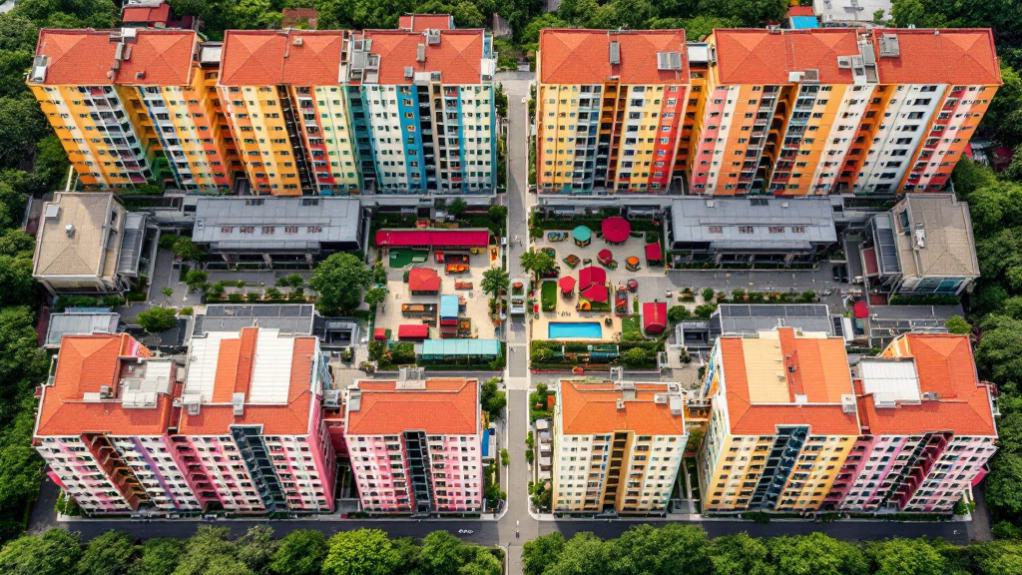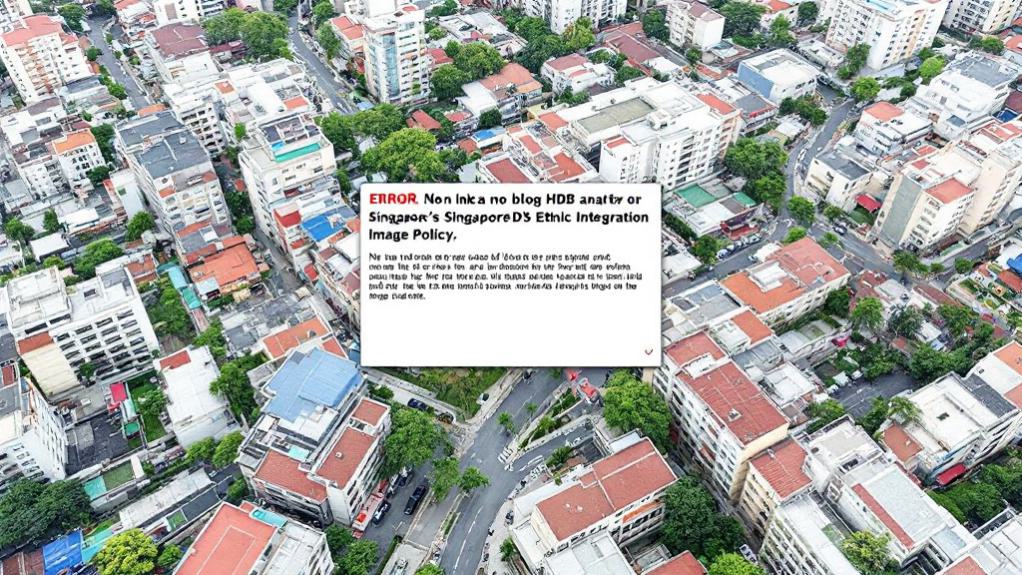Singapore’s Ethnic Integration Policy, established in 1989, implements demographic quotas for HDB blocks and neighborhoods to prevent ethnic enclaves. The policy maintains specific proportions for Chinese (84%), Malay (22%), and Indian/Others (10%) at the neighborhood level, with slightly different percentages at the block level. While creating environments conducive to cross-cultural interaction, the EIP presents challenges in the resale market, particularly for minority ethnic sellers who face a constrained buyer pool. Government assistance measures, including case-by-case appeals and the 2022 buyback initiative, address these market implications.

Since its introduction in 1989 under the direction of Minister S. Dhanabalan, Singapore’s Ethnic Integration Policy (EIP) has served as a cornerstone mechanism for maintaining social cohesion within the nation’s public housing landscape. The policy emerged in response to concerning patterns of ethnic enclaves forming throughout Housing and Development Board (HDB) estates during the 1980s, which threatened to resurrect the pre-independence residential segregation that characterized Singapore’s earlier history.
Singapore’s Ethnic Integration Policy stands as a vital safeguard against the re-emergence of ethnic enclaves in public housing developments.
As a strategic intervention, the EIP established specific ethnic quotas for HDB blocks and neighborhoods, effectively preserving the multicultural fabric of residential communities without necessitating the relocation of existing residents. Senior Minister Tharman Shanmugaratnam has described it as one of the most intrusive yet beneficial policies for Singapore’s social harmony.
The EIP operates through a systematic framework of percentage limitations for each ethnic group—Chinese, Malay, Indian and Others (CMIO)—that reflect Singapore’s broader demographic composition. The initial implementation in 1989 set neighborhood quotas at 84% for Chinese, 22% for Malay, and 10% for Indian/Others, with block quotas established at 87%, 25%, and 13% respectively. These parameters have undergone periodic adjustments to accommodate demographic shifts, particularly in 2010 when the Indian/Others limits were increased to 12% at the neighborhood level and 15% at the block level.
While the EIP has successfully fostered ethnic diversity across HDB estates and created environments conducive to cross-cultural interaction, it has also generated challenges within the resale market. Sellers from minority ethnic groups frequently encounter constraints regarding potential buyers when their block’s ethnic quota has been reached, potentially extending the selling period and affecting transaction values. Households with mixed ethnicities can choose to classify under any of the owner’s races as reflected in their NRIC when participating in the HDB market.
Recognizing these difficulties, the government has implemented various assistance measures, including case-by-case appeals, extended timeframes for completing sales, and as of 2022, a buyback initiative for particularly affected sellers.
The policy’s enduring presence in Singapore’s housing ecosystem reflects the government’s unwavering commitment to racial harmony and integration as foundational societal values, despite ongoing debates about its contemporary relevance in an increasingly cosmopolitan nation with evolving social dynamics.
Frequently Asked Questions
How Does EIP Affect Private Property Sales in Singapore?
The EIP does not directly regulate private property transactions in Singapore, allowing free market principles to govern these sales without ethnic quotas.
This exemption potentially increases demand for private properties among ethnic minorities facing HDB restrictions, which may influence pricing dynamics in certain districts.
Property developers and agents benefit from simplified marketing processes and transaction procedures, while the broader market experiences potential clustering effects that could lead to distinct demographic compositions within private residential enclaves.
Can Landlords Reject Tenants Based on Ethnic Quota Limits?
Landlords in Singapore cannot reject tenants based on ethnic quota limits as these restrictions do not apply to rentals.
While the Ethnic Integration Policy (EIP) governs HDB flat purchases to maintain ethnic diversity in neighborhoods, it has no jurisdiction over the rental market.
Landlords retain full discretion in tenant selection and, though discouraged by government guidelines, may legally consider ethnicity among their selection criteria, as housing rental discrimination is not explicitly prohibited under Singapore law.
Do PR Chinese Count Under the Chinese EIP Quota?
PR Chinese individuals are indeed counted under the Chinese EIP quota in Singapore’s public housing framework.
The Ethnic Integration Policy applies uniformly to both citizens and permanent residents, with no separate ethnic quota allocation for PR Chinese.
This integration mechanism, designed to maintain ethnic balance within HDB estates, requires PR Chinese buyers to adhere to the same proportional limits established for Singaporean Chinese residents when purchasing public housing units.
Are HDB Flats in New Neighborhoods Subject to Different Quotas?
HDB flats in new neighborhoods are not subject to different quotas under the Ethnic Integration Policy.
According to official guidelines, the same EIP quotas apply uniformly to both new and existing neighborhoods throughout Singapore, with limits established at both block and neighborhood levels.
These proportions—87% (block) and 84% (neighborhood) for Chinese, 25% and 22% for Malay, and 15% and 12% for Indian/Others—remain consistent across all residential developments managed by the Housing Development Board.
How Often Are the Neighborhood Ethnic Quotas Updated?
Neighborhood ethnic quotas are updated on the first day of each month, incorporating completed resale applications from the previous month.
This monthly update cycle, which affects all current-month transactions, allows for dynamic adjustments that reflect the latest demographic trends.
The updated quotas are published on the HDB website, with additional access points including e-services, real estate agents, and HDB branch offices, ensuring stakeholders have equal access to current quota information.





